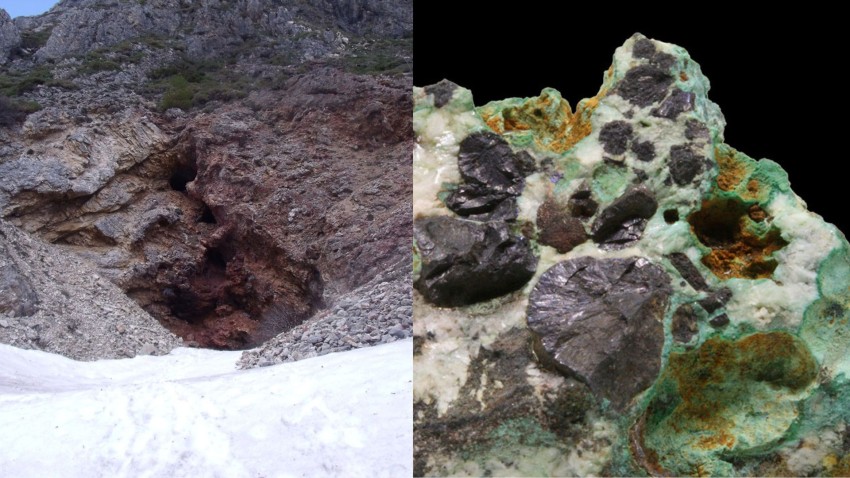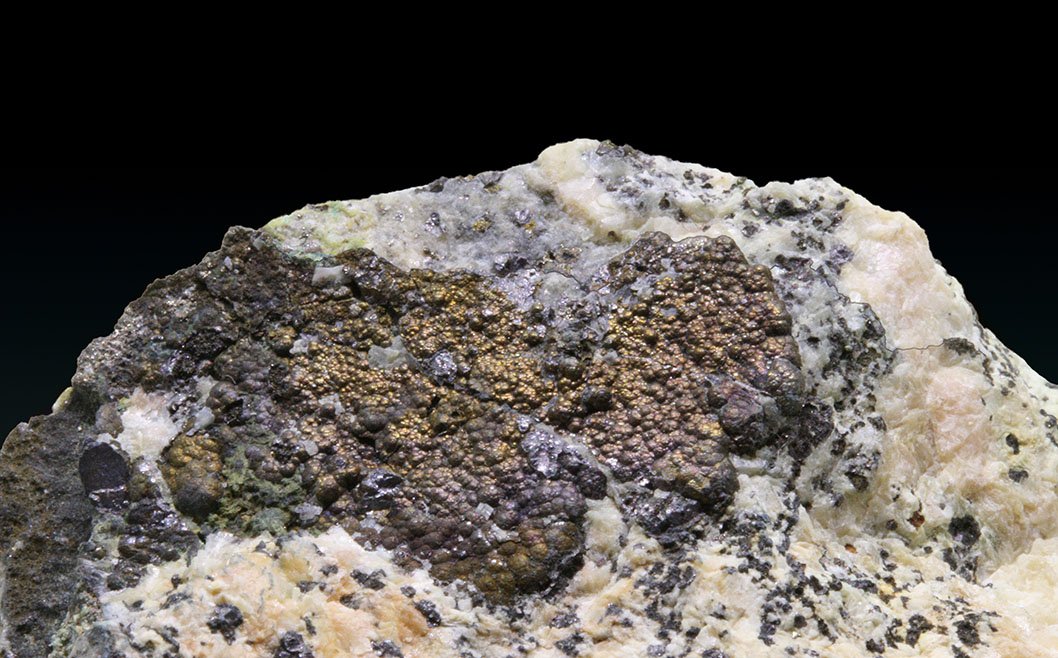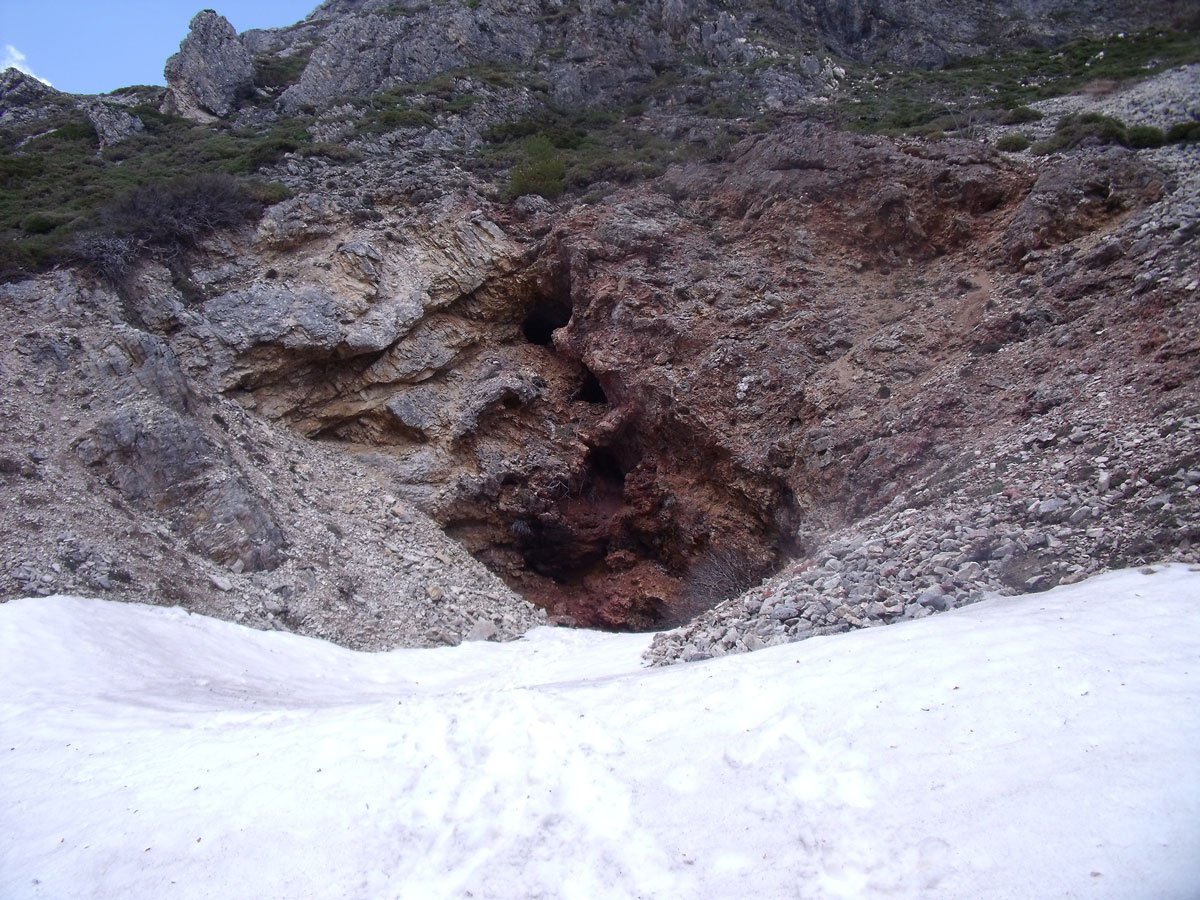Villamaninita: the rare mineral discovered in Cármenes (León) and unique in the world
Our day by day / 08-09-2025
History of the discovery of villamaninita
Origin of the name and first investigations
Villamaninita is a mineral discovered at the beginning of the 20th century in the province of León. It was first described in 1919–1920 from samples sent from the Divina Providencia mine, in the municipality of Cármenes (León). British researchers (Schoeller and Powell) studied it in London and named it “villamaninita,” mistakenly attributing its origin to the nearby Villamanín station. Since then, the type locality has been recognized in Cármenes; to this day, it is considered that its existence in the area has been known since 1920. The original specimen used in its identification is preserved in a museum, recalling the importance of this discovery.
The original specimen and its preservation
The original specimen used for its identification is preserved in a museum, recalling the historical importance of this discovery for Spanish mineralogy.
Finely botryoidal villamaninita, with a chalcopyrite patina on granular dolomite. Locality: La Providencia Mine, Cármenes (León). Collection and photograph: Miguel Calvo.
Characteristics and composition of villamaninita
Chemical formula and crystal structure
Villamaninita appears as a black mineral with metallic luster, in fibrous radiated nodules or small cubic or octahedral crystals (up to 1 cm). Its approximate formula is (Cu,Ni,Co,Fe)(S,Se)₂, composed mainly of copper, nickel, cobalt, and some iron, with a high sulfur content. It belongs to the pyrite group due to its chemical similarity.
Physical and optical properties
Hardness: 4–4.5 on the Mohs scale.
Density: 4.4–4.5 g/cm³.
Structure: Cubic.
Other characteristics: Opaque, easily pulverized, and releases sulfur (and traces of selenium) when heated.
Location and deposits
Divina Providencia Mine, in Cármenes
The only known deposit of villamaninita is in the Divina Providencia mine (also called “La Profunda”), located in the Cármenes pass, in the Central León Mountains. It is about 6 km from the village of Villamanín.
A mineral practically endemic to León
No significant outcrops of villamaninita have been found anywhere else in the world with specimens of good size; some authors even highlight that it is the only locality worldwide with macroscopic samples of this mineral. In the Providencia mine, villamaninita appears mixed with other copper and nickel sulfides (such as bravoite and linnaeite), along with typical secondary oxidation minerals (pseudomorphs of malachite, azurite, etc.) and iron oxides. It is considered a mineral practically endemic to León, and the International Mineralogical Association (IMA) includes it among the minerals with a “single locality.”
Vista de la entrada a la mina Divina Providencia. Fuente: principia.io
Uses and Scientific Value
Interest for Collectors and Museums
Villamaninite has no industrial applications due to the difficulty of processing its veins. Its interest is mainly scientific and for collecting. Well-formed specimens are highly valued for their rarity.
Potential in Geochemical Studies
Like other copper and nickel sulfides, villamaninite can be useful in isotopic studies to reconstruct the composition of the hydrothermal fluids in which it crystallized. Although no specific analyses have been published, its chemistry, rich in S and Se, makes it promising for future research.
Being extremely rare and having no industrial or gemological demand, it is considered a mineralogical curiosity. Well-formed specimens of villamaninite may attract the interest of collectors and geological museums, but their price or appraisal depends more on their exceptional character than on any particular useful property. In summary, villamaninite contributes mainly to scientific knowledge (as a type mineral from León) and to regional geological heritage, but not to profitable commercial exploitation.
A scientific curiosity is that, like other copper and nickel sulfides, villamaninite can be useful as a geochemical archive. In general, the analysis of sulfur and selenium isotopes in sulfides makes it possible to reconstruct the composition of the hydrothermal fluids in which they crystallized (Seal, 2006). Although no specific isotopic studies have been published on villamaninite from León, its chemistry, rich in S and traces of Se, makes it potentially interesting for this type of research.
Bibliographic References
Hey, M. H. (1962). A new analysis of villamaninite. Mineralogical Magazine, 33, 169–170.
Nickel, E. H., & Nichols, M. C. (2009). Mineralogical Abstracts: IMA Database of Mineral Properties. Mineralogical Association of Canada.
Schoeller, W. R., & Powell, A. R. (1920). Villamaninite, a new mineral. Mineralogical Magazine, 19, 14–18.
Seal, R. R. (2006). Sulfur isotope geochemistry of sulfide minerals. Reviews in Mineralogy and Geochemistry, 61(1), 633–677.

